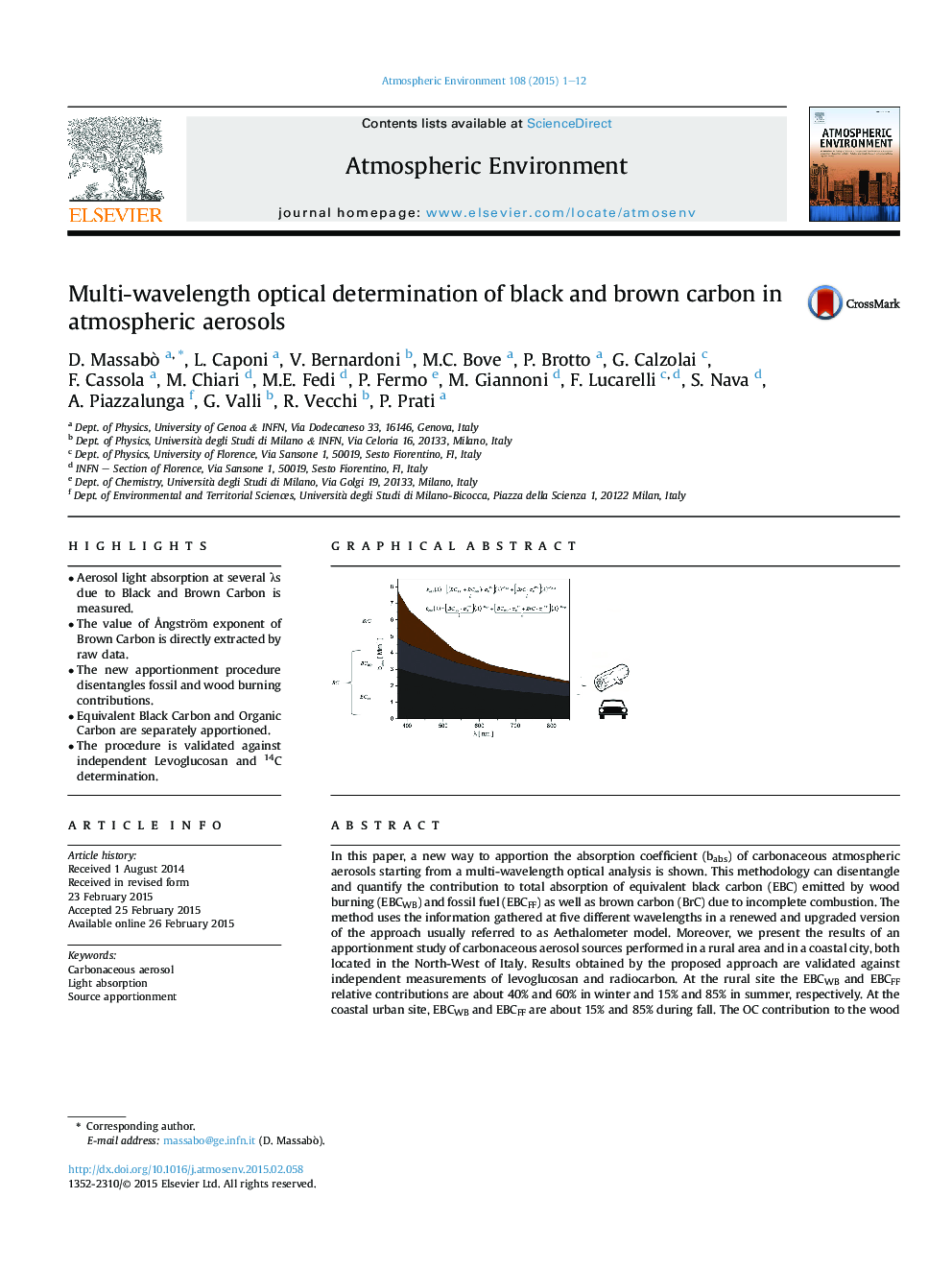| کد مقاله | کد نشریه | سال انتشار | مقاله انگلیسی | نسخه تمام متن |
|---|---|---|---|---|
| 4438145 | 1620363 | 2015 | 12 صفحه PDF | دانلود رایگان |
• Aerosol light absorption at several λs due to Black and Brown Carbon is measured.
• The value of Ångström exponent of Brown Carbon is directly extracted by raw data.
• The new apportionment procedure disentangles fossil and wood burning contributions.
• Equivalent Black Carbon and Organic Carbon are separately apportioned.
• The procedure is validated against independent Levoglucosan and 14C determination.
In this paper, a new way to apportion the absorption coefficient (babs) of carbonaceous atmospheric aerosols starting from a multi-wavelength optical analysis is shown. This methodology can disentangle and quantify the contribution to total absorption of equivalent black carbon (EBC) emitted by wood burning (EBCWB) and fossil fuel (EBCFF) as well as brown carbon (BrC) due to incomplete combustion. The method uses the information gathered at five different wavelengths in a renewed and upgraded version of the approach usually referred to as Aethalometer model. Moreover, we present the results of an apportionment study of carbonaceous aerosol sources performed in a rural area and in a coastal city, both located in the North-West of Italy. Results obtained by the proposed approach are validated against independent measurements of levoglucosan and radiocarbon. At the rural site the EBCWB and EBCFF relative contributions are about 40% and 60% in winter and 15% and 85% in summer, respectively. At the coastal urban site, EBCWB and EBCFF are about 15% and 85% during fall. The OC contribution to the wood burning source at the rural site results approximately 50% in winter and 10% in summer and about 15% at the coastal urban site in fall. The new methodology also provides a direct measurement of the absorption Ångström exponent of BrC (αBrC) which resulted αBrC = 3.95 ± 0.20.
Figure optionsDownload high-quality image (124 K)Download as PowerPoint slide
Journal: Atmospheric Environment - Volume 108, May 2015, Pages 1–12
